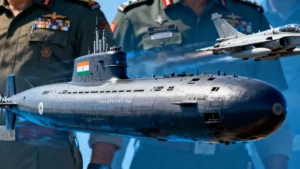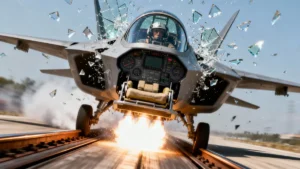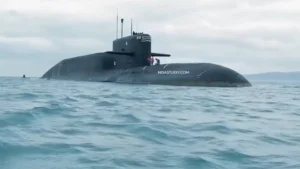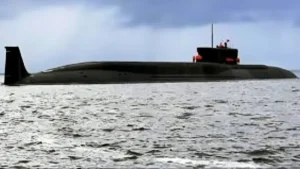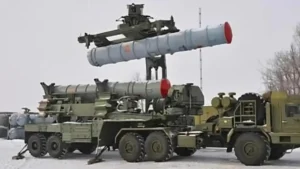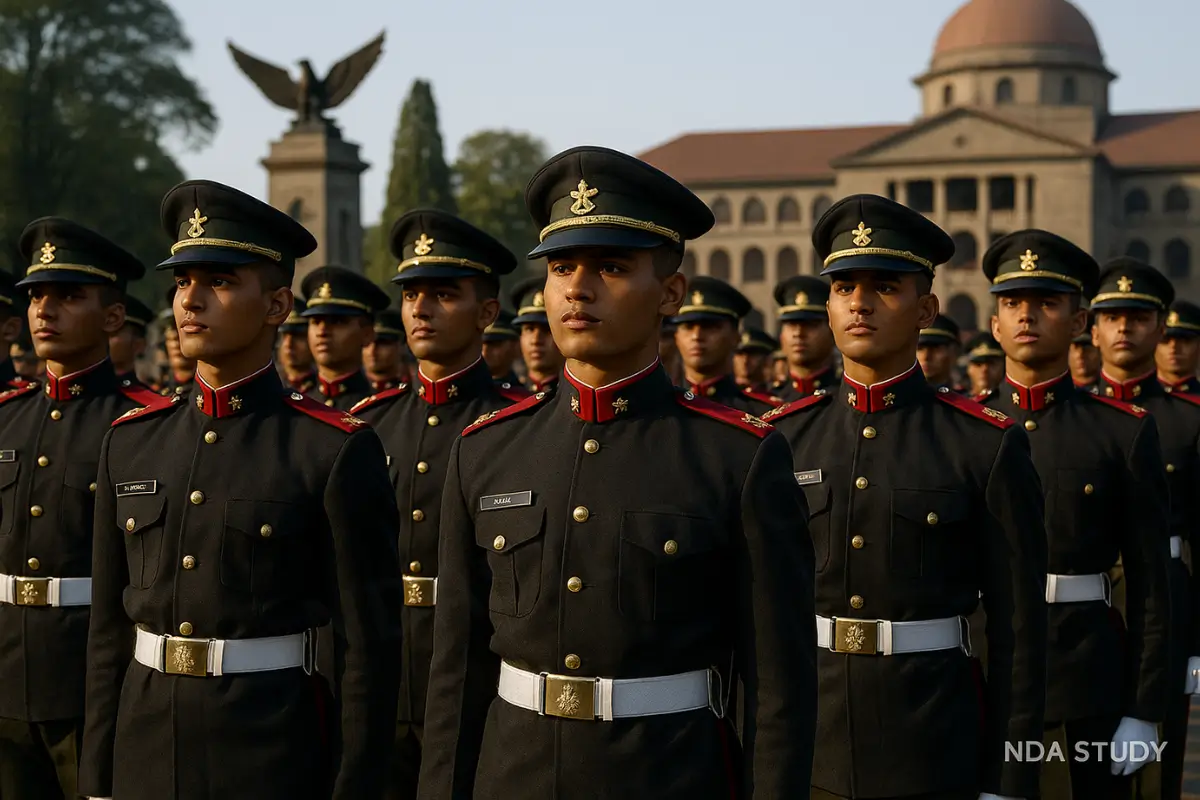After a five-week stay filled with memes, diplomatic acknowledgements, and widespread public interest, the British F-35B stealth fighter that captivated Kerala finally departed from Thiruvananthapuram on July 22. The F-35B’s emergency in Kerala started on June 14 when the advanced UK stealth fighter made an unexpected emergency landing at Trivandrum Airport due to low fuel in the midst of severe weather conditions. Shortly after landing, a hydraulic fault grounded the aircraft, requiring a specialised UK engineering team to arrive and conduct extensive repairs.
This incident quickly turned into a viral sensation, inspiring numerous memes and social media buzz while showcasing the effective collaboration between Indian authorities and the British Ministry of Defence. Beyond local fascination, the event holds global significance as it highlights the strengthening defence ties between the UK and India and exemplifies the challenges involved in repairing cutting-edge military aircraft far from their home bases. The jet’s safe return to operational service marks a milestone in international defence logistics and joint Indo-UK military collaboration, emphasising readiness and strategic partnerships in the Indo-Pacific region.
Why Did the British F-35B Land in Kerala?
On June 14, a British F-35B stealth fighter made an emergency diversion to Thiruvananthapuram Airport in Kerala due to severe weather and critically low fuel, marking the beginning of a high-profile incident. The Indian Air Force coordinated the emergency landing, authorising a safe touchdown and providing essential support. Shortly after landing, technicians discovered a significant hydraulic failure, which grounded the advanced jet for several weeks while it awaited specialised repairs. The incident quickly captured the public’s attention, and the British F-35B jet became a meme sensation across social media.
This emergency stay at Thiruvananthapuram Airport highlighted the logistical and technical challenges of repairing such a cutting-edge aircraft away from its home base. Additionally, it showcased the strengthening defence ties between the UK and India. This joint effort underscores the geopolitical significance of cooperation between the two nations and highlights Kerala’s emerging role in international aviation emergencies.
The Costly & Complex Repair Saga
The costly and complex repair saga of the British F-35B stranded in Kerala began with the aircraft being closely guarded by India’s CISF throughout its unexpected month-long stay at Thiruvananthapuram airport. On July 6, a specialised UK engineering team of 24 personnel arrived, equipped with spare parts and advanced tools, to begin critical repairs. The jet was then shifted to the Air India MRO facility, ensuring protection from Kerala’s heavy monsoon rains and allowing detailed maintenance.
The repair operation was a logistical feat, involving collaboration between UK and US technical teams keen on restoring this high-value stealth fighter. Officials considered the possibility of transporting the jet back on a C-17 cargo plane if repairs failed. Meanwhile, the UK faced estimated parking fees of around ₹5 lakh for the jet’s over 35-day stay, which became a viral talking point on social media. This episode not only highlighted the technical challenges of fixing the F-35B abroad but also how the British F-35B jet became a meme sensation amid a delicate aviation emergency.
How India Supported the British Stealth Jet
On June 14, a British F-35B jet made headlines after it had to make an emergency landing at Thiruvananthapuram Airport because it was low on fuel and the weather was severe. The Indian Air Force helped plan the landing to ensure it was safe. Soon after landing, the jet experienced a serious hydraulic failure, which caused it to stay grounded and require extensive repairs. Indian authorities quickly gave the jet hangar access and provided security to help with the maintenance at the airport.
The British High Commission thanked Indian officials, saying they were “grateful for the continued support and collaboration.” This teamwork not only led to the jet being repaired and able to leave safely, but also showed the growing defence relationship between the UK and India, improving military cooperation. The event highlighted Kerala’s important role and demonstrated India’s ability to handle complex aviation emergencies effectively.
Flying Home: Departure Day & Aftermath
On July 22, the British F-35B stealth fighter took off from Thiruvananthapuram airport after completing repairs and safety checks. The aircraft had stayed in Kerala for 37 days. A team of 14 UK engineers worked hard, even in heavy monsoon conditions, to prepare the jet for departure. British and Indian teams bid a warm farewell as the jet left. Instead of returning to the UK, it flew to Darwin, Australia, to rejoin the HMS Prince of Wales carrier group for ongoing operations.
Also Read:
Pakistan Closes Entire Airspace Amid Missile Test or Military Drill? – Exclusive Expose
Is Pakistan Preparing for Conflict? NOTAM Raises Red Flags in Central Air Command
BREAKING: India to Test Advanced Counter-Satellite Weapon — Defence Space Agency’s Bold New Step
India’s Massive Drone Swarm Strike on ULFA-I Camps in Myanmar: Surgical Strike 2025
Defence Acquisition Council Approves ₹1.05 Lakh Crore in New Projects
This successful recovery shows the strength of UK-India defence ties and highlights Kerala’s growing role in handling international aviation emergencies. During its stay, the British F-35B jet became popular on social media, making its departure a notable event in military aviation history.
Meme-ification: How Kerala (and the Internet) Fell in Love with the Jet
Photos of the “lonely” British F-35B stealth jet drenched in Kerala’s intense monsoon rapidly captured global attention, sparking a wave of viral Kerala F-35B memes across social media. The fighter, unexpectedly grounded for over a month, became a beloved “guest” of the state, inspiring witty posts from Kerala Tourism, netizens, and international media alike. The official tourism handle joked, “Kerala, so beautiful, even stealth jets stay longer!” echoing the sentiment fans shared worldwide. This meme fest extended beyond humour—with British MPs discussing the episode in the House of Commons—placing the incident under the global defence spotlight.

The viral affection for the “F-35B Nair” boosted Kerala’s and India’s friendly, open image, serving as a unique soft power moment amid serious defence cooperation. This blend of military might and local warmth showed how a high-tech aviation emergency could capture hearts online, uniting geopolitics with cultural charm through memes and goodwill.
What This Incident Means for Global Defence & UK-India Ties
On July 23, 2025, the prolonged presence of the British F-35B stealth fighter jet in Kerala provided a clear demonstration of real-world emergency logistics and international cooperation. This unusual incident showcased the swift coordination between Indian authorities and British defence teams in managing both repairs and security, highlighting the strength of the UK-India defence relationship and their operational readiness.
How Kerala’s British F-35B Jet Became a Meme Sensation (FAQs)
1. Why did the UK F-35B land in Kerala?
On June 14, 2025, the British F-35B stealth fighter made an emergency landing at Thiruvananthapuram International Airport in Kerala due to bad weather and critically low fuel while returning to the HMS Prince of Wales carrier. Indian Air Force coordinated the safe landing, ensuring no incident occurred. Shortly after touchdown, the jet developed a hydraulic failure, grounding the advanced aircraft until repairs could be completed. The emergency diversion brought global attention, highlighting Kerala’s strategic aviation role and raising questions about advanced military tech deployment.
2. How long was the jet stuck at Trivandrum airport?
The UK stealth fighter remained grounded in Kerala for over five weeks, from June 14 to July 22, 2025. During this time, the jet underwent extensive inspections and repairs, first by onboard Royal Navy engineers, then by a specialist UK engineering team flown in on July 6. The prolonged stay inspired viral social media memes and a significant media buzz around the “guest jet” that couldn’t leave Kerala
3. Who paid the parking, repair, and support costs?
The British Royal Navy covered the costs associated with the jet’s parking, repairs, and support during its unexpected stay. Reports highlighted an estimated parking fee of approximately ₹5 lakh (around $6,000 USD), which went viral across social media. The UK government also financed the arrival of a 40-member engineering team to manage complex repairs at the Air India MRO facility. Indian authorities offered hangar access and security support, marking strong UK-India defence cooperation.
4. Was it a security risk for India?
Despite concerns over advanced technology being grounded on foreign soil, Indian officials assured there was no security risk. The jet was closely monitored and guarded by the CISF. Additionally, India’s integrated air defence network detected and tracked the F-35B from the moment it entered Indian airspace, underscoring national readiness. The cooperation between India and the UK throughout the incident reflected mutual trust and reinforced strategic ties rather than risk.
5. What does this mean for future UK-India military cooperation?
This high-profile incident became a model for real-world emergency logistics and defence collaboration, showcasing seamless coordination between the Indian and British armed forces. It bolstered diplomatic goodwill, with the British High Commission praising India’s support and emphasising “strengthening UK-India defence partnership.” The episode is seen as a stepping stone toward enhanced Indo-UK joint exercises and deeper cooperation in global aircraft deployments, cementing Kerala’s strategic role in Indo-Pacific defence dynamics.
The Indian Air Force played a crucial role in facilitating the emergency landing and subsequent maintenance, emphasising Trivandrum’s strategic significance in global aviation crises. Diplomatic goodwill flourished as both nations reiterated their commitment to “strengthening the UK-India defence partnership” through seamless teamwork. Beyond the logistics of repairs, this episode has boosted public confidence in India’s capability to support advanced military assets. Additionally, it lays the groundwork for enhanced Indo-UK joint exercises and future global aircraft deployments, reflecting the deepening ties amid shifting geopolitical dynamics in the Indo-Pacific region.
Author’s Note
The unexpected month-long stay of the British F-35B jet in Kerala became much more than a technical emergency—it turned into a feel-good diplomatic moment, an impressive engineering feat, and a global meme blast that captured hearts worldwide. This unique incident shows how defence cooperation and lighthearted social media engagement can create positive public sentiment while strengthening international ties. How Kerala’s British F-35B Jet Became a Meme Sensation is a story of collaboration, culture, and camaraderie that transcended borders.
Stay tuned for more in-depth defence and aviation coverage, viral updates, and exclusive insights. Don’t forget to share this story, subscribe to our newsletter, and follow us for real-time updates on breaking news and engaging trends shaping the world of global security and technology.
Stay Tuned & Stay Connected!

